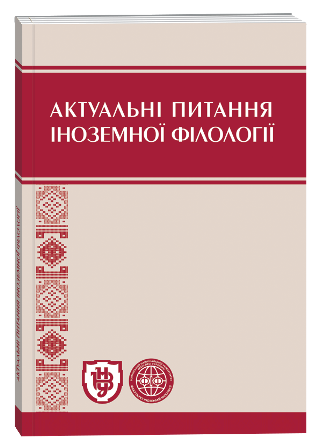A COMPARATIVE STUDY OF REDUPLICATION IN ENGLISH AND KARAKALPAK
DOI:
https://doi.org/10.32782/2410-0927-2024-21-2Keywords:
reduplication, English, Karakalpak, total reduplication, partial reduplicationAbstract
Reduplication, a word-formation process involving the repetition of a word or its part, is a widespread linguistic phenomenon. This study aims to explore the formal properties of reduplication in English and Karakalpak, two languages with distinct typological characteristics. We explore various types, distribution, and semantic properties of reduplication in both languages. English, despite being a Western European language, exhibits a wide range of reduplicative patterns, including copy reduplication (tick-tick, puff-puff), ablaut reduplication (mish-mash, sing-song), rhyming reduplication (handy-dandy), and rhyming compounds (merge-purge). These types vary structurally and phonologically. Copy reduplication involves the repetition of a whole base, often found in baby talk, shortened words, and expressive language. Ablaut reduplication entails the repetition of a word with vowel change. Rhyme reduplication is characterized by consonant gemination in the reduplicant. Rhyming compounds is composed of two content words. In Karakalpak, a Turkic language, reduplication is also a productive process, with full and partial reduplication being the primary types. Full reduplication involves the repetition of entire words or roots (oyın-oyın, tóbe-tóbe), while partial reduplication, particularly interfixed reduplication (kep-kelte, mupmuzday), is used to form intensive forms of adjectives and adverbs. Full reduplication is used to express intensity, plurality, or duration. Additionally, there are other types of reduplication such as echo reduplication (balıq-malıq, shaypay) and synonymous reduplication (aman-esen, ıdıs-tabaq). Echo reduplication is the process, where a word is repeated with a phonetic modification to create a rhyming pair. This type often conveys collectivity, indefinite plurality, humiliation and contempt. Synonymous reduplication involves the combination of two content words. These words can be synonyms, near-synonyms, or antonyms. This study has provided an overview of formal properties exhibited by reduplication in English and Karakalpak, but it is still important to explore the semantic and pragmatic functions of reduplicative words in both languages in future research.
References
Bekbergenov, A. (1979). Qaraqalpaq tilinde sózlerdiń jasalıwı [Word-formation in the Karakalpak language], Nukus: Karakalpakstan. [in Karakalpak]
Bekbergenov, Q. A. (2016). Түркий тиллериндеги жуп сөзлердиң изертлениў тарийхынан [From the history of the study of paired words in the Turkic languages]. Bulletin of Karakalpak Branch of Academy of Sciences of the Republic of Uzbekistan, 4(245), 185–188. [in Karakalpak]
Dienhart, J. M. (1999). Stress in Reduplicative Compounds: Mish-Mash or Hocus-Pocus? American Speech, 74(1), 3–37. http://www.jstor.org/stable/455746
Göksel, A., & Kerslake, C. (2004). Turkish: A comprehensive grammar. Routledge.
Inkelas, S. (2005). Reduplication: Doubling in morphology. Cambridge University Press.
Johanson, L. (2021). The structure of Turkic. In L. Johanson & É. Á. Csató (Eds.), The Turkic languages (pp. 26–59). https://doi.org/10.4324/9781003243809-3
Kdirbaeva, B. (2023). С-type reduplication in Karakalpak. XXI century renaissance in the paradigm of education and technology innovation, 1(1), 168–170.
Kdirbaeva, B. (2024). A study of reduplication patterns in Karakalpak adverbs. Advantages and challenges of applying local and global science and technology into foreign language teaching, 1(1), 134–136.
Marchand, H. (1960). The categories and types of present-day English word-formation: a synchronic-diachronic approach. München: Beck.
Mattiello, E. (2013). Extra-grammatical Morphology in English: Abbreviations, Blends, Reduplicatives and Related Phenomena. Berlin, Boston: De Gruyter Mouton. https://doi.org/10.1515/9783110295399
Merlini Barbaresi, L. (2008). Extra-grammatical morphology: English reduplicatives. In Douthwaite J., PezzinI D. Words in Action: Diachronic and Synchronic Approaches to English Discourse: Studies in Honour of Ermanno Barisone, 228–241.
Minkova, D. (2002). Ablaut reduplication in English: the criss-crossing of prosody and verbal art. English Language and Linguistics, 6(1), 133–169. https://doi.org/10.1017/s1360674302001077
Moravcsik, E. A. (1978). Reduplicative constructions. In Joseph Greenberg (ed.), Universals of Human Language. Stanford: Stanford University Press, 297–334.
OED. (2024). Oxford English Dictionary. Retrieved September 29, 2024, from https://www.oed.com/
Rubino, C. (2005). Reduplication: Form, function and distribution. In B. Hurch (Ed.), Studies on Reduplication (pp. 11–30). Berlin, Boston: De Gruyter Mouton. https://doi.org/10.1515/9783110911466.11
Schwaiger, T. (2015). 25. Reduplication. In P. Müller, I. Ohnheiser, S. Olsen & F. Rainer (Ed.), Volume 1 Word-Formation: An International Handbook of the Languages
of Europe (pp. 467–484). Berlin, München, Boston: De Gruyter Mouton. https://doi.org/10.1515/9783110246254-027
Stachowski, K. (2014). Standard Turkic C-type reduplications. Kraków: Jagiellonian University Press.
Thun, N. (1963). Reduplicative Words in English: A Study of the Types Tick-tick, Hurly-burly and Shilly-shally. Uppsala.
Wurm, S. (1951). The Karakalpak Language. Anthropos, 46(3/4), 487–610. http://www.jstor.org/stable/40449486







